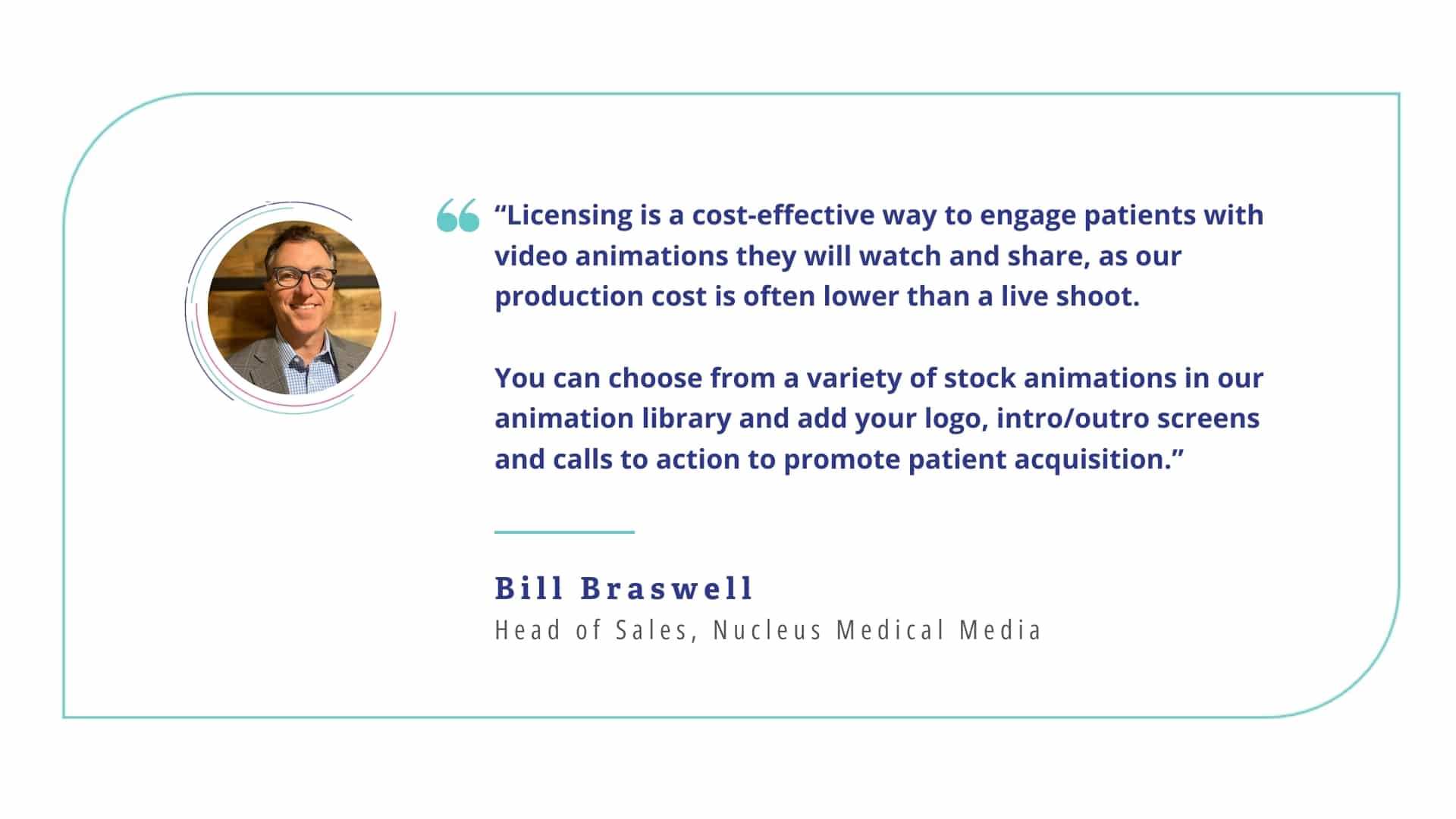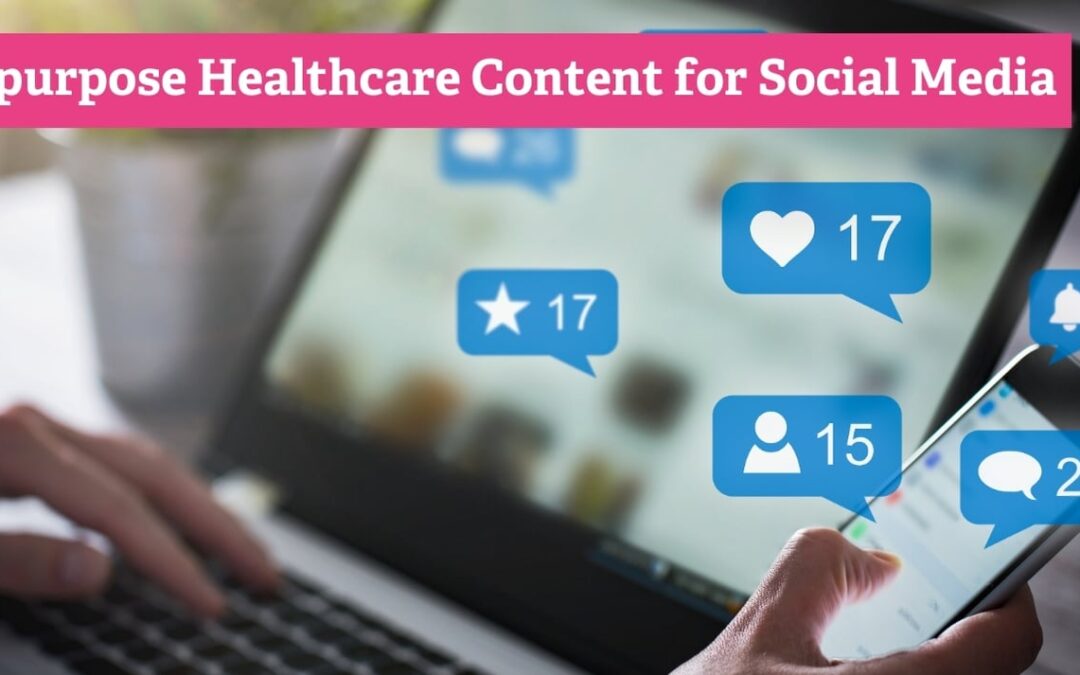
The year is 1995. You’re sitting in a dark theater when a desk lamp hops onto the screen, and the world’s first fully computer-animated movie begins.
77 minutes later, the lights come back on, and you think, “How did they manage to make talking toys look so real?”
None of us could have imagined how far animation would come in the past 30 years. (Nope, not a typo. 1995 was almost 30 years ago.) Today, all kinds of organizations use that “talking toy technology” to engage their audiences — even hospitals and health systems.
How can medical animation enhance your healthcare content strategy? Explore the benefits of animation in healthcare content.
What Is Medical Animation?
Animations are a series of moving high-definition digital images. They’re typically short (5 minutes or less) and easy to consume. Animations in the medical industry can help patients visualize a procedure or see how a condition affects the body.
Animations can show:
- What happens during surgical procedures
- How drugs or complex imaging studies work
- Biologic processes that contribute to disease
- Complex self-care activities, such as wound care after surgery
Live-action vs. medical animation video
Live-action videos may feel more “real” to viewers. And they are great for featuring your physicians, staff, facility and even patients more authentically. But live videos aren’t an appropriate medium for every situation, such as illustrating conditions or procedures. In many situations, 3D medical animations are a better bet.
5 Benefits of Using Medical Animation Videos
Do you want to incorporate more visual elements into your content marketing? Find out how medical animation videos can improve your content game.
Related: Learn more about healthcare video marketing.
1. Animations show without getting too graphic
Remember the show “Dr. Pimple Popper?” It got pretty gruesome. (Sorry for the picture that undoubtedly just popped into your brain, no pun intended.)
Not everybody wants to know what the inside of the body looks like. Medically accurate animations allow patients to visualize a procedure or bodily function without seeing more than they want to see — without getting the “ick.”
As an added benefit, explainer videos make upcoming procedures less scary for patients and caregivers. For example, Nationwide Children’s animation shows the procedure for hypoplastic left heart syndrome in a way that is easy to understand and reassuring for parents.
2. They break down the complex
Let’s say you’re creating content for moyamoya disease, a problem with the blood vessels in the brain. Treatment may include a surgical procedure to restore normal blood flow called encephaloduroarteriosynangiosis (EDAS).
Not only is the name hard to read (if your eyes glazed over after “encephalo-,” you’re not alone), but the procedure itself is complex and difficult to explain in writing.
Readers with low health literacy may have trouble decoding and comprehending it. Users with high health literacy may not have the patience or mental energy to devote to dense medical writing. Offering a visual way to understand complex information benefits all of your readers.
Related: Patient-friendly content begins with the script. Explore healthcare-focused video scriptwriting services.
3. Animations have a longer shelf life
No piece of content can remain evergreen in healthcare — science advances every day, after all — but animations are just about as evergreen as you can get. You don’t have to worry about them becoming dated due to:
- Clothing style
- Facility updates
- Interior changes
- New logos
Even if something in the animation becomes outdated, it can be replaced. For instance, if a new surgical instrument comes out for EDAS, your video production agency can digitally add the device to the animation.
Watch an example of an animation for a wearable injector. The simplicity of the content makes it timeless.
4. They make for inclusive content in healthcare
People want to feel represented in the content they consume. But marketing teams can’t represent every audience member in every piece of video content.
Using animations makes it easier to create inclusive healthcare content. You can produce medical animation videos that are neutral to race, ethnicity, age, gender or any other demographic.
5. 3D animations can be cost-effective
Live shoots with professional production agencies can be expensive. The cost of one premium video for your website could surpass $50,000.
Aside from the video package price, live shoots also pull physicians and staff members away from their work to participate in the video. Your organization may need additional team members on staff during shooting days to keep up with patient care. That staffing cost adds up.
Animations are less disruptive to staff schedules and often more cost-effective. This is especially true when you’re working with a medical animation company that offers licensing options, like our friends at Nucleus.
Is Animation Beneficial to the Medical Industry?
3D animation isn’t always the best format for the job — live-action video is better for content like “meet the doctor” clips and facility tours. However, 3D medical animations are good to have in your toolbox. Healthcare animations:
- Make graphic or scary procedures more palatable to patients
- Simplify complex topics
- Stay up to date longer than live-action videos
- Make video content more inclusive
- Can be a cost-effective way to add video to your strategy
Thinking of Using Medical Animations in Your Content?
Interested in video animation but not sure where to start? We help hospitals create content that engages and educates patients, including 3D animations. Find out how medical animations and videos can complement your content marketing strategy.





